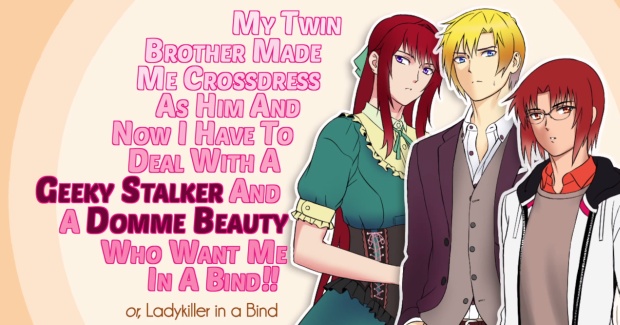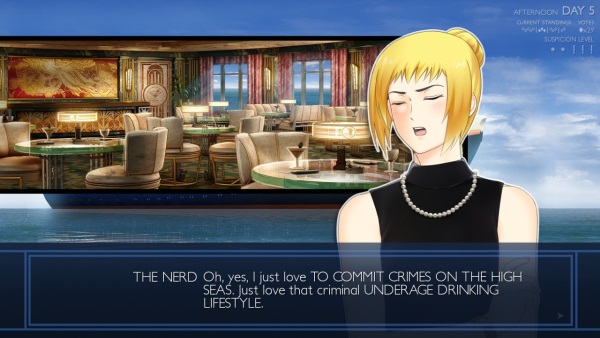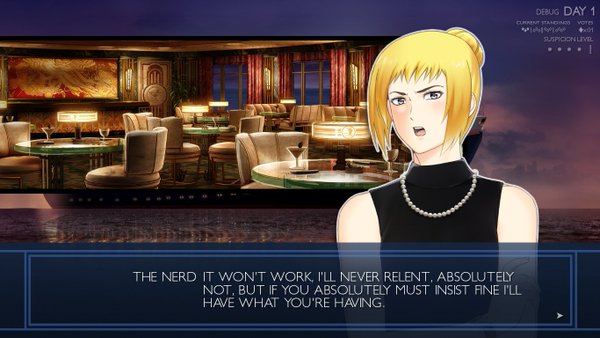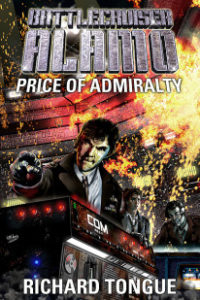
Christine Love’s Analogue: A Hate Story will always hold a special place in my heart, because it is possibly the only popular game out there about Koreans in space (besides the venerable Starcraft, of course). Yet, if you’ve ever played Analogue to the end, you’ll also know that it’s not exactly a lighthearted romp or something you play for casual fun: you must construct additional pylons, and they’re all made of sorrow.
I’d heard that Ladykiller in a Bind, the newest entry from Love Conquers All Games, was going to be a sharp departure from Analogue, but since I’d loved the previous entry so much, I knew I’d buy Ladykiller when it came out. I didn’t even need to try the demo when I met the developer at PaxEast a year ago—I’d already decided. And, as expected, the game is worth every penny. Thus, this won’t be a traditional review of the game, since there are already better-written ones on other sites. Rather, this is going to be a summary of my two (so far) playthroughs: one that I “lost” and one that I “won.” And for those of you who want to end up together with The Beauty (and keep her), I guess this would be one of the first walkthroughs out there.
For simplicity, all characters will be referred to by the first item on the default choices list, even though you can rename them to whatever you want.
My first playthrough:
I decided quickly on that I probably wasn’t going to win the in-game “Game” and its five million-dollar prize, and that for this run I’d attempt to to romance as many of the side characters as I could, while pursuing The Stalker as my night-time interest. I wasn’t really interested in seeing what happened if I racked up 5 suspicion points, although I may try for it on another playthrough just for completeness.
I clicked through the tutorial, met The Boss and the other major side characters, and was left with my first set of options for the afternoon of Day One. I clicked on the branch with the least difficulty: The Athlete and The Nerd with one star, and…promptly fell head over heels in love with The Nerd.

Spoiler alert: I don’t think it’s possible to really romance her, since the furthest I got was a kiss that fizzled pretty quickly. But I think she might actually be the best-written character in the game. Not because of compelling drama or a tragic back-story or unexpected betrayal, but because she’s just so breathtakingly, amazingly real.
I pursued The Nerd’s route with a vengeance, didn’t steal her phone from her when she fell asleep on my shoulder, and ended the route with fewer votes than I’d started with. I also earned the extreme pleasure of seeing her smile and blush.
After the Nerd was through, I started The Boy. After he stole my phone and used it ala Anthony Weiner, I found myself pining for the option to chuck him off the side of the ship. Alas, this isn’t Hitman and murder wasn’t an option. For Ladykiller Unleashed I think The Beast should have a garroting wire and cyanide in the ol’ inventory. Please, Christine, if you’re reading this?
The Boy’s route done, I then clicked on The President. Spoiler alert: I declined to give him my votes, even in exchange for the motorcycle, which is probably why I got Epilogue B in the end. I’m going to have to go through and replay this route a few times, because I either terminated it prematurely somehow or ran out of game time, and it felt unfinished. I didn’t get the achievement, either, so there’s definitely more.
Throughout this playthrough, I’d spent my nights (save for one, when I racked up four suspicion bars on The Nerd’s route) with The Stalker. Unfortunately, the three guaranteed votes she gave me every night weren’t enough to make up for my poor performance in getting votes during the week. I lost the Game and lost The Stalker, but at least I got my bike back. The ploy at the end about 5 million bucks split 137 ways as hush money was pretty nifty.
My second playthrough:
This time, I was either going to win the Game, land more characters in the sack, or at least try to end the story together with my love interest. To change things up and experience the romance that other game reviewers were crowing about, I chose to spend my nights with The Beauty instead.
I went for The Photographer this time (since her route offered up to 14 votes at the outset). As a word of warning, I think that because I actively chose to help The Photographer in exchange for 4 votes, that might have locked me out of The Slut’s route. I’ll have to go back and experiment on playthrough number three. I took the gamble, gave my votes to her, and then endured the last scene with her to get 23 votes out of it. Not bad, save for getting violated.
At this point—because I’d locked The Slut out—my options were The Athlete, The Boy, and The President. I’d already gone through The Boy’s route (which hadn’t resulted in any sort of profit), and part of The President’s (which on the last playthrough might’ve actually incurred a loss), so I decided on The Athlete.
The Athlete’s route was surprisingly fun and relaxing to play. As is the case with The Nerd, you won’t do anything more than angrily kiss him (The Beast is about a 5.5 on the Kinsey Scale), but playing his scenes gave me a treasure trove of backstory on not only the side characters on the ship, but also The Beast’s fractured relationship with the rest of her family. Unfortunately, The Athlete resulted in no profit in terms of votes.
With only enough game time for two more scenes, I revisited The President’s route. Only this time, I went ahead and gave him all measly twenty-three votes I had in exchange for the motorcycle (this may rack up a suspicion point, by the way), figuring that again, I’d failed to win The Game, and once again, I’d leave his route incomplete.
Yet in the end, giving The President my votes in exchange for The Beast’s bike proved to be exactly the right thing to do. The move impressed The Prince so much that he offered to have The Beast become him (forever) in the eyes of the outside world, and thus gave me the leverage to convince the Beauty to dump her engagement with The President and stay with The Beast. I’ll consider this to be the “good” ending, and definitely better than epilogue B. Otherwise, I’m sure I’d have gotten a variant of epilogue B, save with The Beauty stuck in some unhappy arranged marriage.
So there you have it (Spoiler alert): Looks like the way to at least stick with The Beast’s love interest may be to make a deal with The President during his route. I had more than twenty votes at the time, though, and I’m curious as to whether the same outcome might be had with fewer.
My goals for the next playthrough are: 1) Unlock The Slut, 2) Complete The President, 3) Win The Game. Actually, that sounds like politics as usual in the good ol’ US of A. If you’re interested in playing it, LKIAB is for sale at the Humble Store:
And as a final treat, more Nerd:




